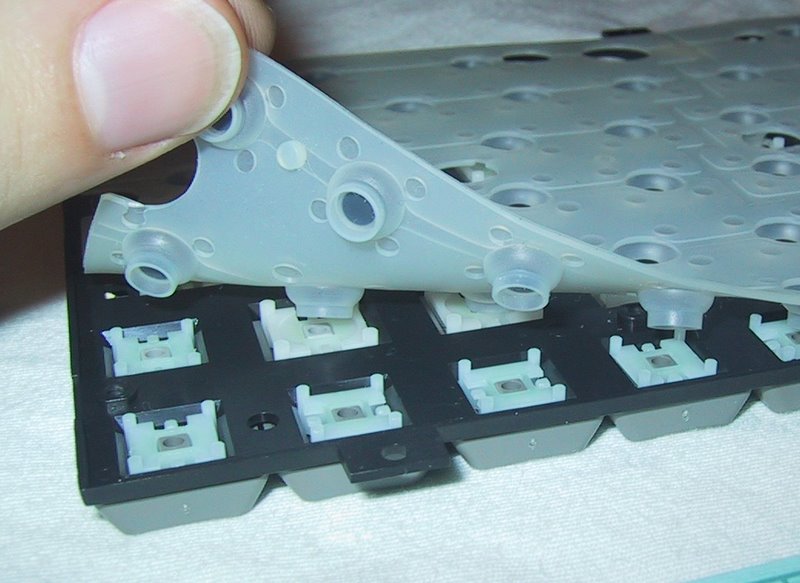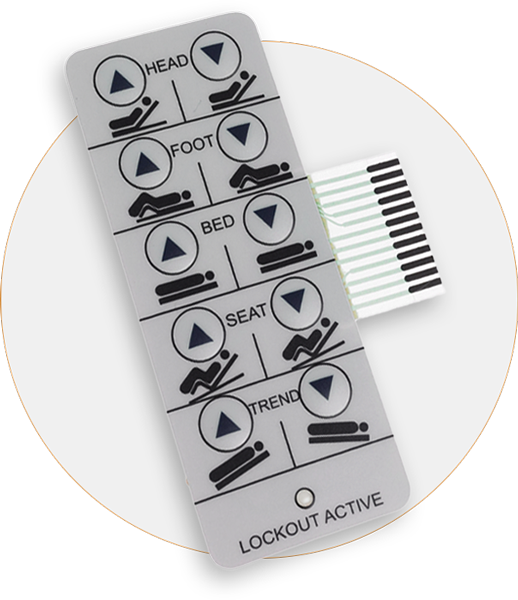Membrane Switches vs. Conventional Switches: What You Need to Consider
Membrane Switches vs. Conventional Switches: What You Need to Consider
Blog Article
Membrane Change Technology: The Key to Dependable and Cost-efficient User Interfaces
Membrane layer button modern technology has arised as a critical element in the style of user interfaces, offering both integrity and cost-effectiveness throughout a diverse range of applications. As we explore the multifaceted benefits of membrane layer switches, their capacity for innovation elevates inquiries concerning future applications and advancing patterns.
Understanding Membrane Layer Change Modern Technology
Membrane switch technology is a widely used interface service in different electronic gadgets, using a seamless mix of functionality and layout. This technology incorporates numerous layers of products, generally containing a visuals overlay, spacer layer, and a circuit layer. The visuals overlay shows the interface aspects, while the spacer layer divides the circuit layer from the overlay up until a customer triggers a button.
When pressure is put on the overlay, the circuit layer finishes the electric circuit, sending out a signal to the tool. This mechanism permits various setups, including responsive responses and backlighting alternatives, boosting customer interaction. Membrane switches are normally produced utilizing durable products such as polyester or polycarbonate, making certain longevity and resistance to ecological variables like dampness and dirt.
The flexibility of membrane switches over enables their application in varied industries, including medical tools, consumer electronic devices, and commercial controls. Their compact design enables combination right into space-constrained atmospheres, supplying an efficient interface without jeopardizing visual allure. Recognizing the details of membrane layer switch technology is important for producers and designers looking for to produce trustworthy and efficient human-machine interfaces.
Trick Advantages of Membrane Layer Buttons
While different interface remedies exist, membrane layer switches offer unique advantages that make them a recommended option in many applications. Among the key advantages is their sturdiness; membrane layer buttons are created to stand up to extreme environmental conditions, including moisture, dust, and temperature changes, ensuring durable efficiency. This durability substantially reduces the demand for frequent substitutes, thus reducing total upkeep expenses.

In addition, membrane layer buttons are lightweight and compact, making them ideal for applications where space is restricted. Their inconspicuous style adds to a smooth look without jeopardizing performance.
Cost-effectiveness is likewise a noteworthy benefit, as the manufacturing process for membrane switches has a tendency to be more economical contrasted to conventional mechanical switches. This price, integrated with their integrity and convenience of setup, placements membrane layer switches over as a functional remedy for a wide variety of industries seeking efficient and effective interface.
Applications Throughout Different Industries
How do membrane layer buttons adapt to the varied demands of various sectors? Membrane button modern technology is significantly acknowledged for its adaptability, making it appropriate for a wide variety of applications across several markets.
In consumer electronics, membrane buttons offer a compact remedy for push-button controls and home devices, improving user experience via intuitive style. Furthermore, the industrial sector leverages membrane layer switches for equipment control board, gaining from their resistance to severe environments, such as wetness and dust.
Army and aerospace applications also use membrane layer buttons for their reliability and capacity to hold up against severe investigate this site conditions, making certain functional performance in important circumstances. The food and drink sector embraces these switches for automated systems, where sanitation and convenience of operation are paramount (membrane switch). Inevitably, membrane layer buttons are customized to meet the distinct needs of each sector, confirming their important duty in contemporary technology user interfaces
Layout and Personalization Choices

In the world of membrane switch modern technology, style and modification choices play a critical function in boosting capability and individual communication. These buttons can be tailored have a peek here to satisfy certain functional needs and visual choices, making them functional components in different applications.
Among the key personalization choices is the format of the switch itself, which can be developed to suit special interface and ergonomic considerations. By readjusting the shape, size, and plan of buttons, producers can produce user-friendly layouts that help with simplicity of use. Additionally, the consolidation of different colors and visuals overlays permits branding and boosted exposure, making certain that customers can quickly recognize features.
In addition, membrane layer buttons can be engineered with numerous responsive comments mechanisms, such as elevated buttons or audible clicks, to enhance the user experience. Various materials can likewise be picked for sturdiness and environmental resistance, attending to aspects such as wetness, temperature variations, and chemical exposure.
Inevitably, the considerable style and customization choices readily available in membrane layer switch modern technology encourage services to create customized services that not only satisfy useful needs but additionally align with their branding and operational requirements.

Future Patterns in Membrane Buttons
As membrane layer switch modern technology remains to progress, future trends are significantly concentrated on boosting individual experience and integrating advanced capabilities. One significant trend is the assimilation of touch-sensitive and capacitive modern technologies right into conventional membrane layer switches. This development permits more user-friendly interface, supplying responsive comments while maintaining a smooth style.
One more arising trend is using eco-friendly materials, driven by the growing need for you can find out more lasting manufacturing practices. Producers are looking for to reduce their carbon footprint by making use of recyclable substrates and low-impact inks, aligning with global sustainability objectives.
Additionally, the increase of the Net of Points (IoT) is prompting the consolidation of clever attributes into membrane layer switches. Enhanced connectivity choices will allow devices to communicate with each various other, permitting for smooth assimilation right into more comprehensive systems.
In addition, improvements in printing modern technologies, such as digital printing, are enabling better layout versatility and customization. This makes it possible for suppliers to produce detailed layouts and dynamic shades cost-effectively.

Conclusion
To conclude, membrane switch innovation represents an important innovation in interface style, using significant advantages in longevity, modification, and cost-effectiveness. Its prevalent applicability throughout diverse industries underscores its importance in contemporary innovation. As developments remain to arise, specifically in touch-sensitive user interfaces and lasting materials, the potential for membrane changes to enhance individual experience and functionality stays appealing. Continued exploration of this modern technology will likely generate further improvements and expand its range in future applications.
Report this page